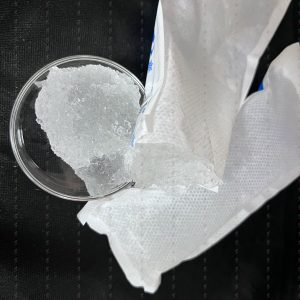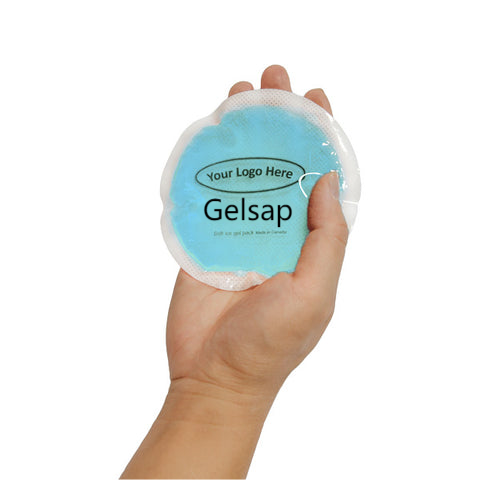Instant Cold Packs

Instant cold packs offer several advantages, making them a valuable addition to first aid kits and emergency bags. Here’s a breakdown of their benefits and how to use them effectively:
Advantages:
- No Refrigeration Needed: Instant cold packs do not require refrigeration, making them convenient for use on the go.
- Easy Activation: Simply fold and shake the pack to activate its contents, making it quick and simple to use in emergency situations.
- Ideal for First Aid: These packs are great for immediate treatment of minor injuries while outdoors or on the field.
- Portability: Lightweight and available in various sizes, making them easy to carry in travel or sports bags.
- Variety of Sizes: Instant cold packs come in different sizes to suit various needs and applications.
Disadvantages:
- Non-Reusable: These packs are designed for single-use only and cannot be reused.
- Limited to Cold Therapy: They can only provide cold therapy and are not suitable for heat therapy.
- Short Duration of Cooling: Instant cold packs stay cold for a shorter period compared to gel or clay packs.
Best Used For:
- Emergencies while traveling (e.g., camping, backpacking, road trips)
- Sports injuries requiring immediate cold therapy
How to Use:
- Activate the cooling agent by shaking the pack to ensure thorough mixing.
- Wrap the cold pack in a cloth or towel before applying to the skin to prevent ice burns.
- Apply to the affected area for 15-20 minutes, not exceeding this duration.
Instant cold packs work through a chemical reaction that occurs when the internal water and chemical bags are mixed upon activation. This reaction creates an endothermic process, rapidly cooling the pack for temporary relief of pain and swelling.
While instant cold packs are effective for immediate cold therapy, they are single-use items and should be disposed of safely after activation. Avoid puncturing the pack to prevent spillage of the activated contents, although they are generally non-toxic.
In summary, instant cold packs are invaluable for quick relief in emergencies or outdoor activities but are not intended for long-term use or heat therapy.
Gel Packs

Gel packs are a versatile option for hot and cold therapy, offering several advantages and considerations for their use:
Advantages:
- Reusable: Gel packs can be used multiple times, making them cost-effective.
- Cost-Effective: They are relatively inexpensive and widely available.
- Dual Use: Suitable for both cold and hot therapy, providing flexibility in treatment.
- Variety of Sizes: Available in various shapes and sizes to fit different body parts.
Disadvantages:
- Requires Temperature Adjustment: Gel packs need to be frozen or heated in a microwave to achieve the desired temperature.
- Best Used For: Ideal for long-term home treatment of acute injuries and chronic conditions.
How to Use:
- For cold therapy, freeze the gel pack flat for at least two hours before use.
- For hot therapy, heat the gel pack in the microwave based on its size, ensuring gradual heating to avoid overheating.
- Always use a cloth or towel as a barrier between the skin and the pack to prevent skin damage.
- Apply the gel pack to the affected area for 15-20 minutes, allowing the skin to return to normal temperature between applications.
Gel packs are a modern alternative to traditional remedies like frozen peas or hot water bottles. They are made from a mixture of water and non-toxic substances, enclosed in durable, leak-proof plastic.
The versatility of gel packs is their key feature, allowing them to be used repeatedly for various hot and cold therapy needs. This makes them especially useful for managing chronic conditions like arthritis, where alternating therapies is beneficial.
Caring for gel packs is straightforward. Store them flat in the freezer if mainly used for cold therapy. After use, wash with mild soap and water, then dry before storing. Avoid dropping or overheating to prevent damage.
While gel packs may not be as convenient for immediate emergencies as instant cold packs, their durability and flexibility make them a valuable tool for ongoing pain relief and recovery from surgeries or chronic ailments.
Clay Packs
Clay packs offer unique advantages and considerations for hot and cold therapy:

Advantages:
- Natural Ingredients: Utilizes natural ceramic clay and non-toxic oils.
- Extended Temperature Retention: Stays hot or cold longer compared to gel packs.
- Enhanced Therapeutic Effect: Molds onto the body part, providing a higher therapeutic effect.
- Pliant Texture: Remains pliant even at extreme temperatures, offering comfort during use.
Disadvantages:
- Longer Preparation Time: Takes longer to freeze or heat compared to gel packs.
- Weight and Bulk: Heavier than instant cold or gel packs.
- Susceptible to Drying: May dry out if overheated or exposed to direct heat/sunlight.
Best Used For:
- Long-term home treatment of acute injuries and chronic conditions.
How to Use:
- Freeze the clay pack flat for four hours for cold therapy, ensuring it molds onto the affected area effectively.
- Heat in the microwave for 60 seconds for hot therapy, adjusting in 20-second increments until desired temperature is reached.
- Always use a barrier between the pack and skin to prevent skin damage.
- Apply for 15-20 minutes per session, avoiding prolonged use.
Clay packs have a rich history in traditional medicine, believed to draw out toxins when applied to the skin. Today, they are crafted using natural ceramic clay and non-toxic oils, offering prolonged temperature retention and therapeutic benefits.
Their ability to mold onto the body part effectively sets them apart, providing a comfortable and targeted healing experience. For cold therapy, clay packs remain pliant even when very cold, allowing for precise application to stiff muscles and joints. When used for hot therapy, they release heat gradually, promoting relaxation and faster healing.
Despite their benefits, clay packs require longer preparation times and are heavier compared to other options. However, their durability and extended temperature retention make them ideal for long-term home treatments.
Caring for clay packs involves wiping them clean after use and storing them properly to prevent drying. While they may not be as quick to use as other packs, their therapeutic benefits and versatility make them a valuable addition to hot and cold therapy options.

